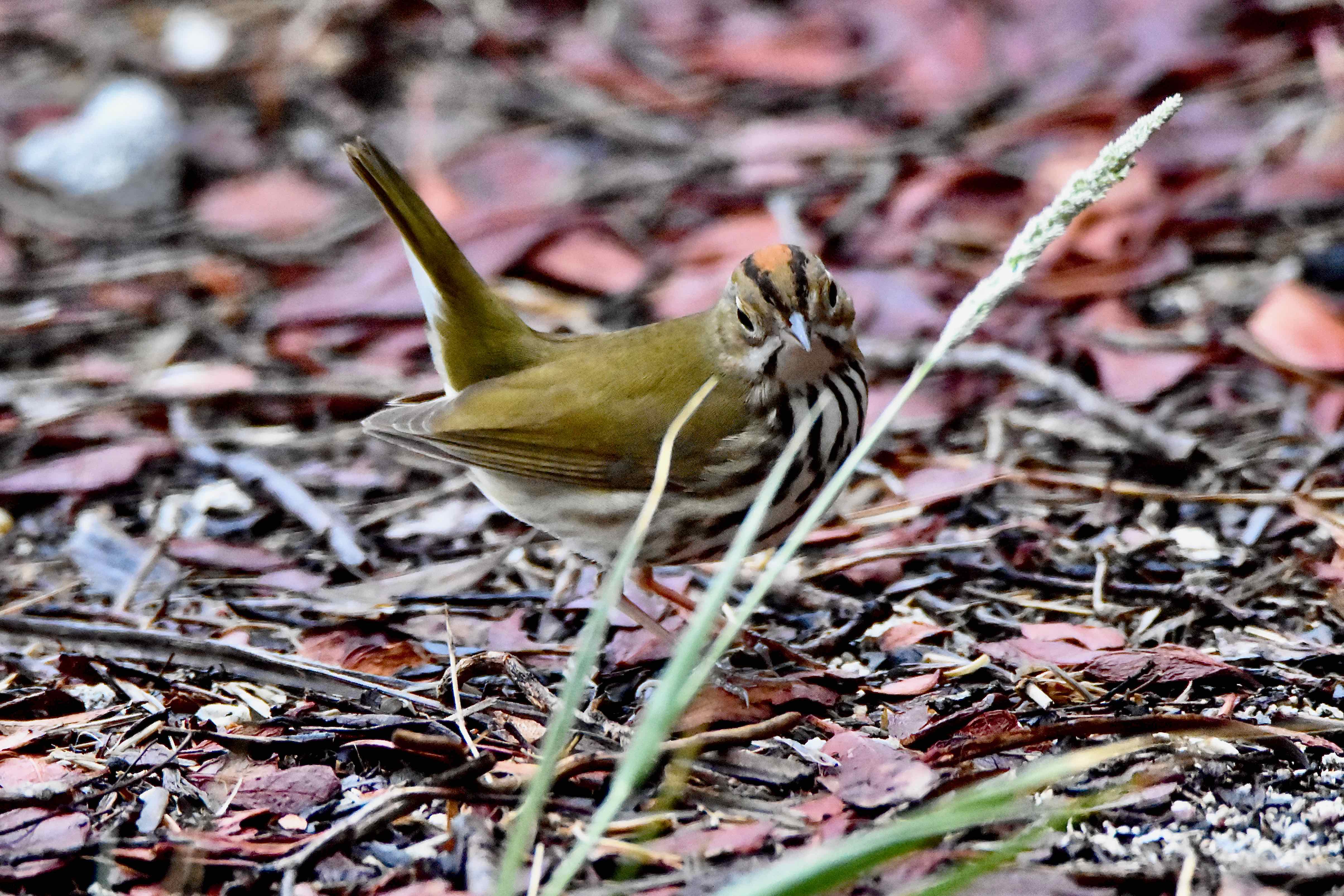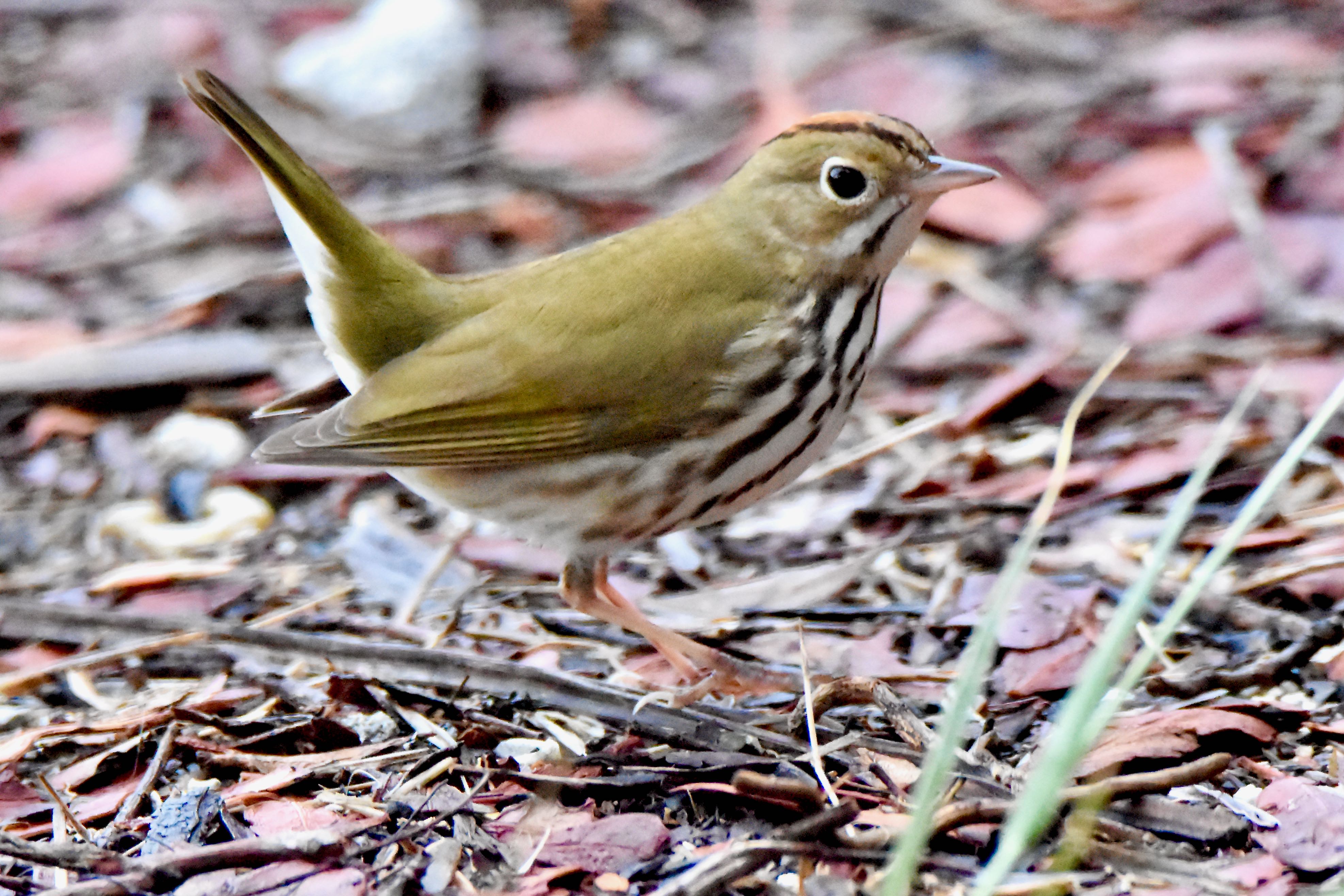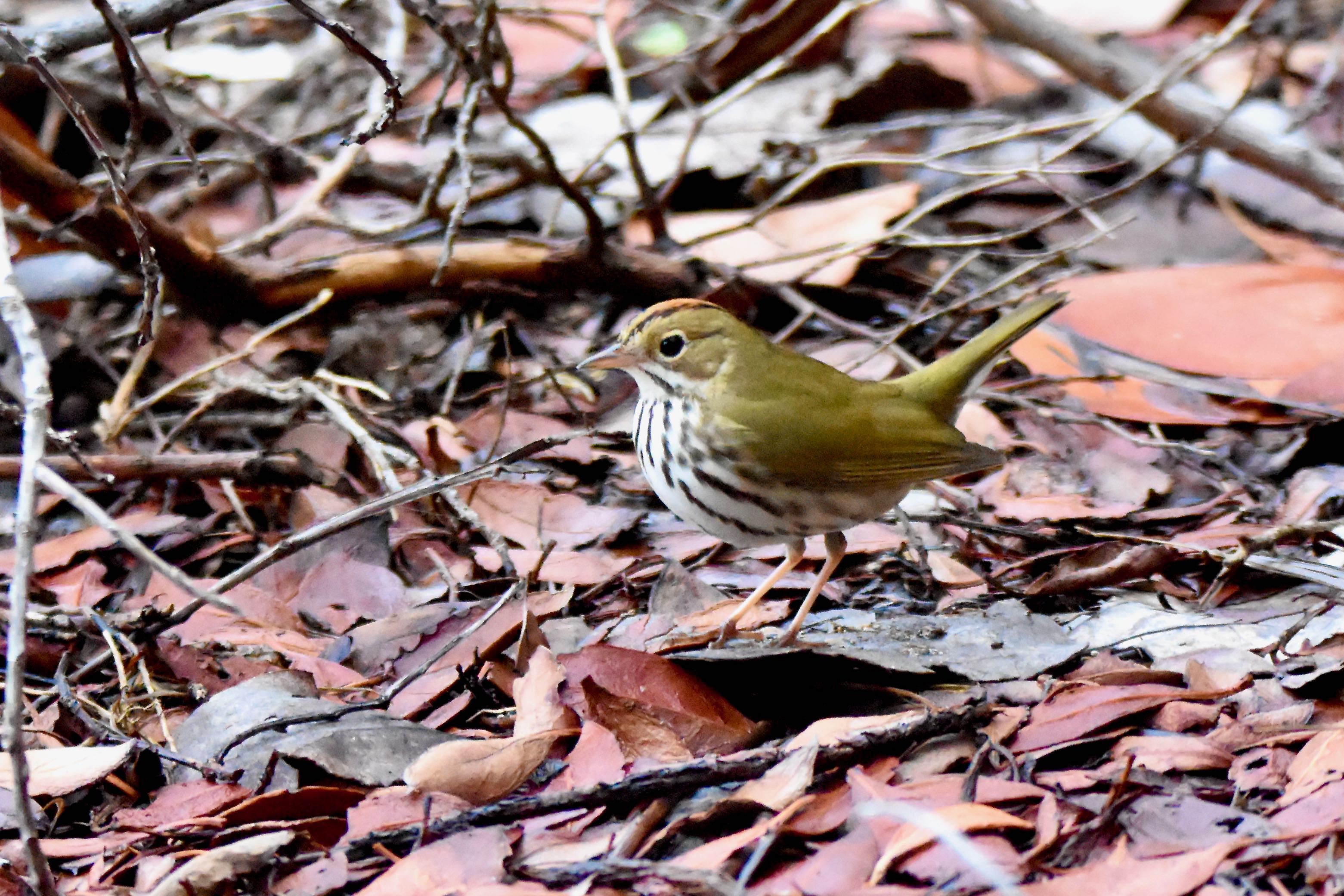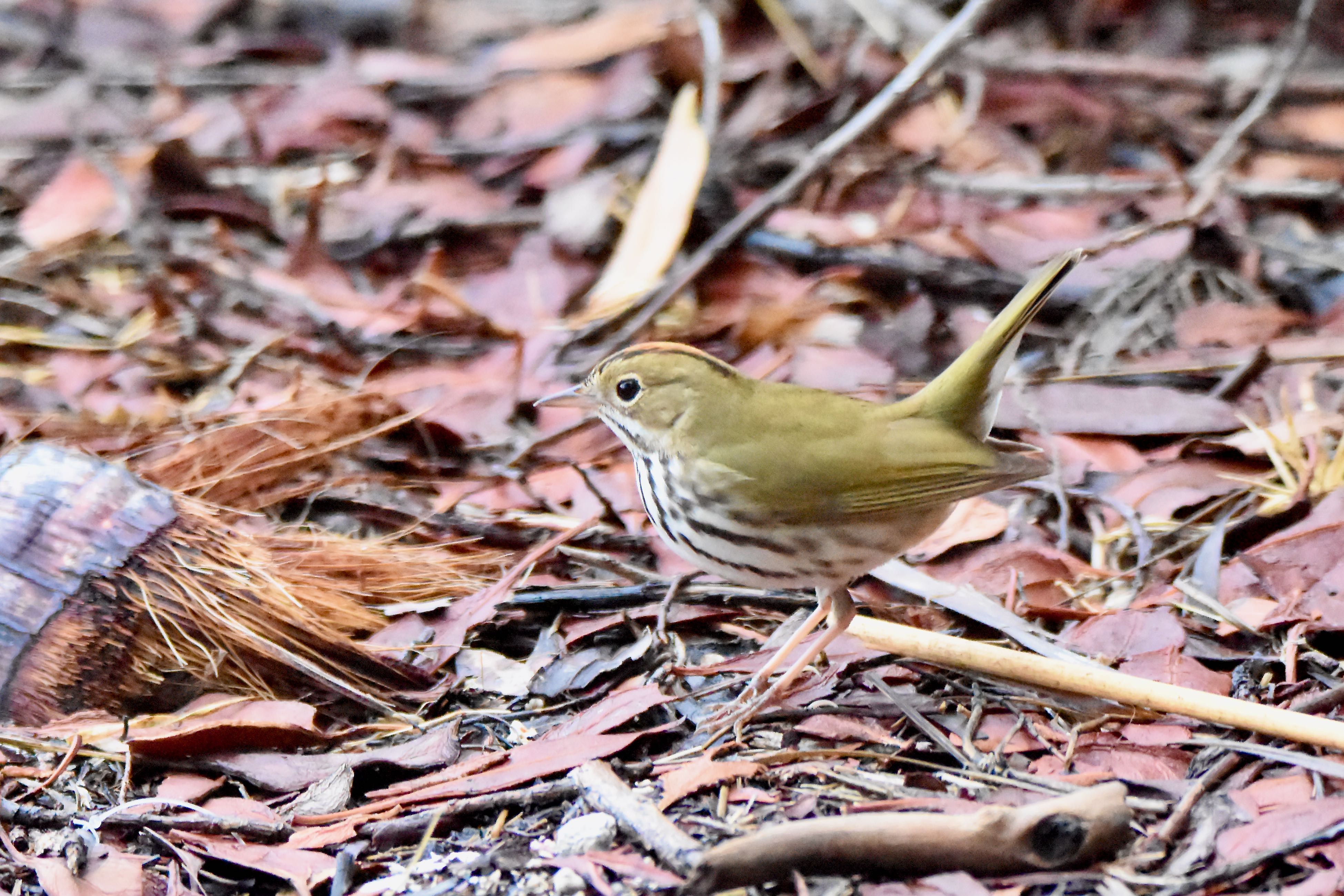
Ovenbird, photographed at Garden Key, Dry Tortugas National Park, Monroe County, in April 2017.
No, the ovenbird, Seiurus aurocapillus, doesn't resemble an oven in any conceivable way. However, its nest does, which is how the unusual name of this little songbird came about.
Ovenbirds are winter visitors to the Sunshine State, and a fairly common one at that. Spotting one, however, can be difficult because they tend to stick to the forest floor where they blend in with the leaf litter and other debris.
It is a warbler, and large as warblers go, with a body length that approaches six inches. On the other hand, ovenbirds are on the drab side of the warbler spectrum, but they do have a bright orange band sandwiched between two brown lines that runs along the crest of the head front to back. The face, back and wings are light brown; the underside is white with brown streaking. The face is marked with white eye rings and and a faint horizontal line extending from the side of the eye toward the back of the head.
The legs are pink and the tail is often cocked, as shown in the photographs on this page. Males and females share the same color pattern; immatures of both sexes are a bit duller.
Ovenbirds are migratory birds, spending summers in the northern two-thirds of the United States well into Canada — as far north as the Northwest Territories in the west and New Foundland in the east. They're known to stray as far as Greenland and the United Kingdom. Come winter, they'll retreat to Texas and Florida, into the Caribbean, Mexico, Central America, Colombia and Venezuela.
Ovenbirds require large expanses of forest to breed successfully. They are ground nesters, and when logging or development cuts a forest into small areas, or fragments it, ovenbirds become susceptible to predators and parasitic, egg-dumping cowbirds.
A good meal for an ovenbird is a nice, juicy bug of some kind, spiders, worms, snails and even small lizards. The spruce budworm is a favorite. They forage on the ground, walking, not hopping, picking through debris on the forest floor to find their prey. As noted above, ovenbirds are ground nesters. Females construct a nest from grasses, mosses and leaves, and camouflaged with leaves and twigs. It's a covered nest, with a slit in the middle; the nest is said to resemble a Dutch oven.
Females usually lay clutches of four or five; mom handles all the sitting, while dad fetches her food. Both parents feed their offspring, which are able to leave the nest after a week to 10 days. The parents will continue to care for them for 10 days to three weeks more. Pairs are generally monogamous through breeding season; most years they'll have one brood but can have as many three, depending on the abundance of spruce budworms.
Overall, the ovenbird population is in good shape, but their numbers are dwindling in places. One odd culprit: earthworms. The creeping-crawling things are invading the forests of the Great Lakes region and altering forest floors in ways that leave them with fewer of the types of plants that ovenbirds rely on for cover. Free-roaming cats are also threats. Ovenbirds are among the most likely of birds to be killed in collisions with windows.
Garden Key, Dry Tortugas National Park



